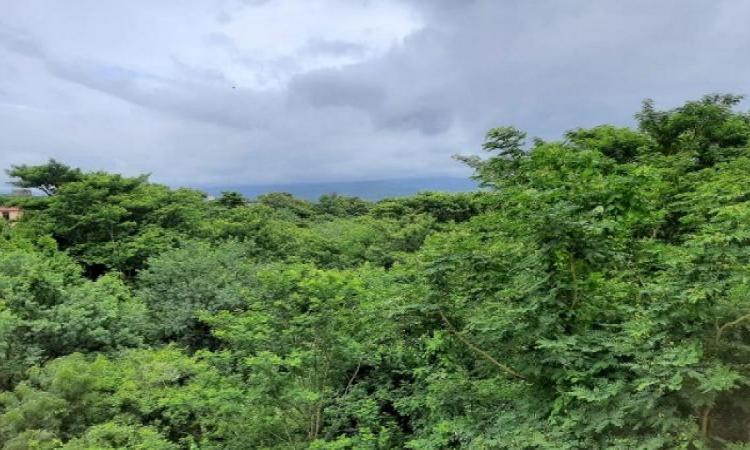
Common lands make up one-fifth of India’s landmass and play an important role in meeting the subsistence and livelihood needs of more than 350 million rural population, and are of great social and cultural significance to rural communities. However, they are still officially designated as ‘wastelands’ since colonial times informs this paper titled 'Valuing ecosystem services provided by land commons in India: implications for research and policy' published in Environmental Research Letters.
Commons provide a number of valuable services in the form of fodder, fuelwood, timber, organic manure, seed, fruit, etc and non-material benefits such as clean air, carbon sequestration, flood control, etc. However, they continue to face widespread degradation and fragmentation due to economic activities, human encroachment, and land conversions, along with environmental pollution. Policies and programmes in India also neglect the commons.
Commons cover 66.5 million hectares of land in India and are classified as forests, permanent pastures and other grazing lands (all grazing lands, pastures and meadows), culturable wastelands (land that is left uncultivated, but that has the potential to be productively cultivated) and barren and unculturable lands (deserts, mountains and other lands that cannot be cultivated and require exorbitant costs to cultivate).
Limited information exists on the commons as providers of ecosystem services although they continue to support vast proportions of rural populations in India. This paper provides a valuation of the ecosystem goods and services provided by commons in the country.
What are ecosystem services
Ecosystem services include direct and indirect contributions that ecosystems make that benefit and help in the survival of humans. They are classified into:
- Provisioning services: Include contributions such as food, water, resources such as wood, oil, genetic resources and medicines.
- Regulating services: Include benefits derived from natural processes and functioning of ecosystems and include climate regulation, flood regulation and natural hazard regulation, pollination, water purification etc.
- Supporting services: Include supporting functions necessary for survival such as photosynthesis, supporting water cycles and nutrient cycles, maintenance of viable species gene pools etc.
- Cultural services: include non-material benefits that people can obtain from ecosystems.
Ecosystem services provided by commons (ha−1 yr−1)
Forests commons provide the highest value of ecosystem services followed by culturable wastelands, permanent pastures and grazing lands and barren and culturable lands.
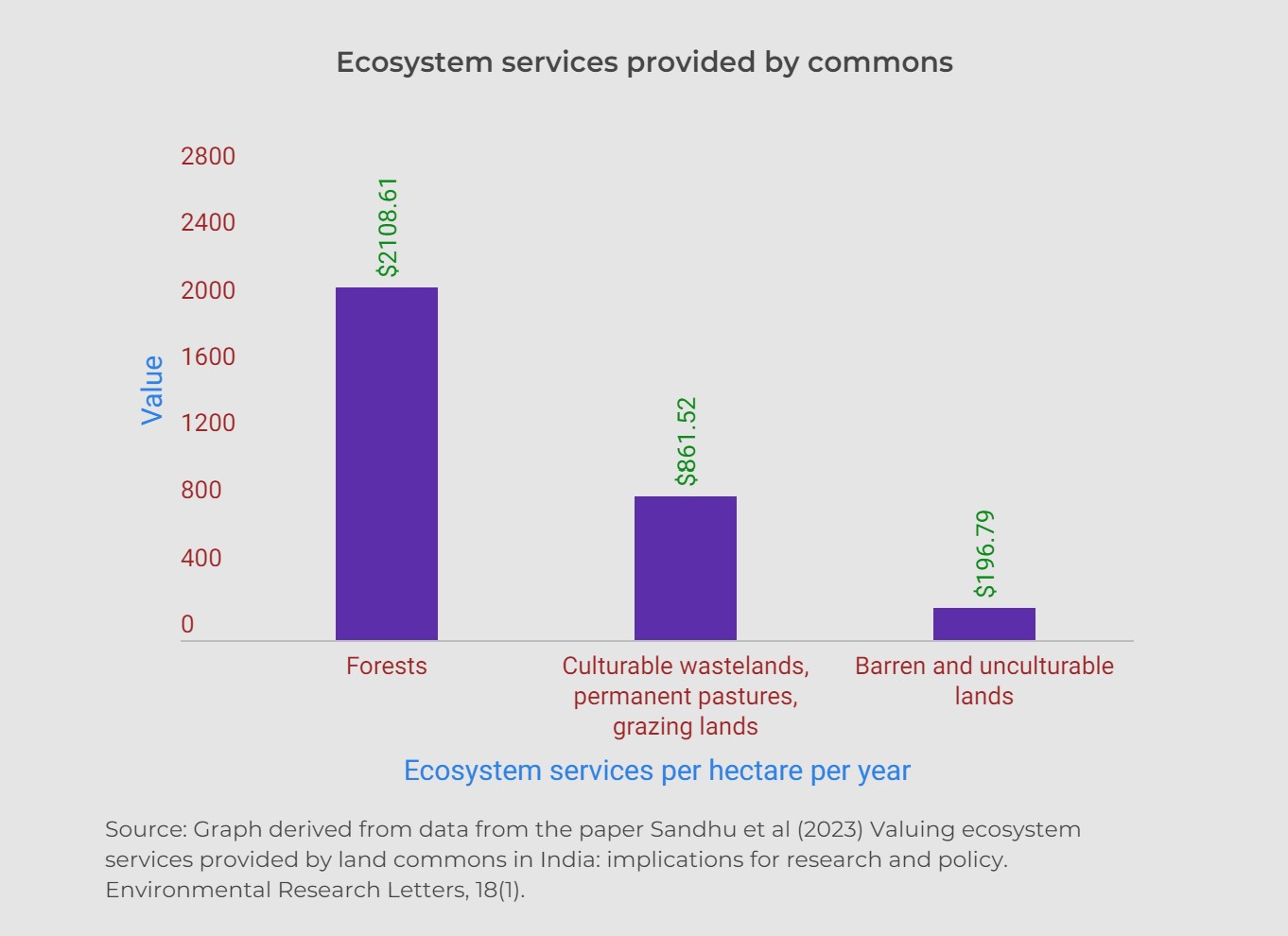
Ecosystem services provided by forest commons (ha−1 yr−1)
Among forest commons, provisioning services generate the highest average economic value followed by regulating services followed by supporting services and cultural services.
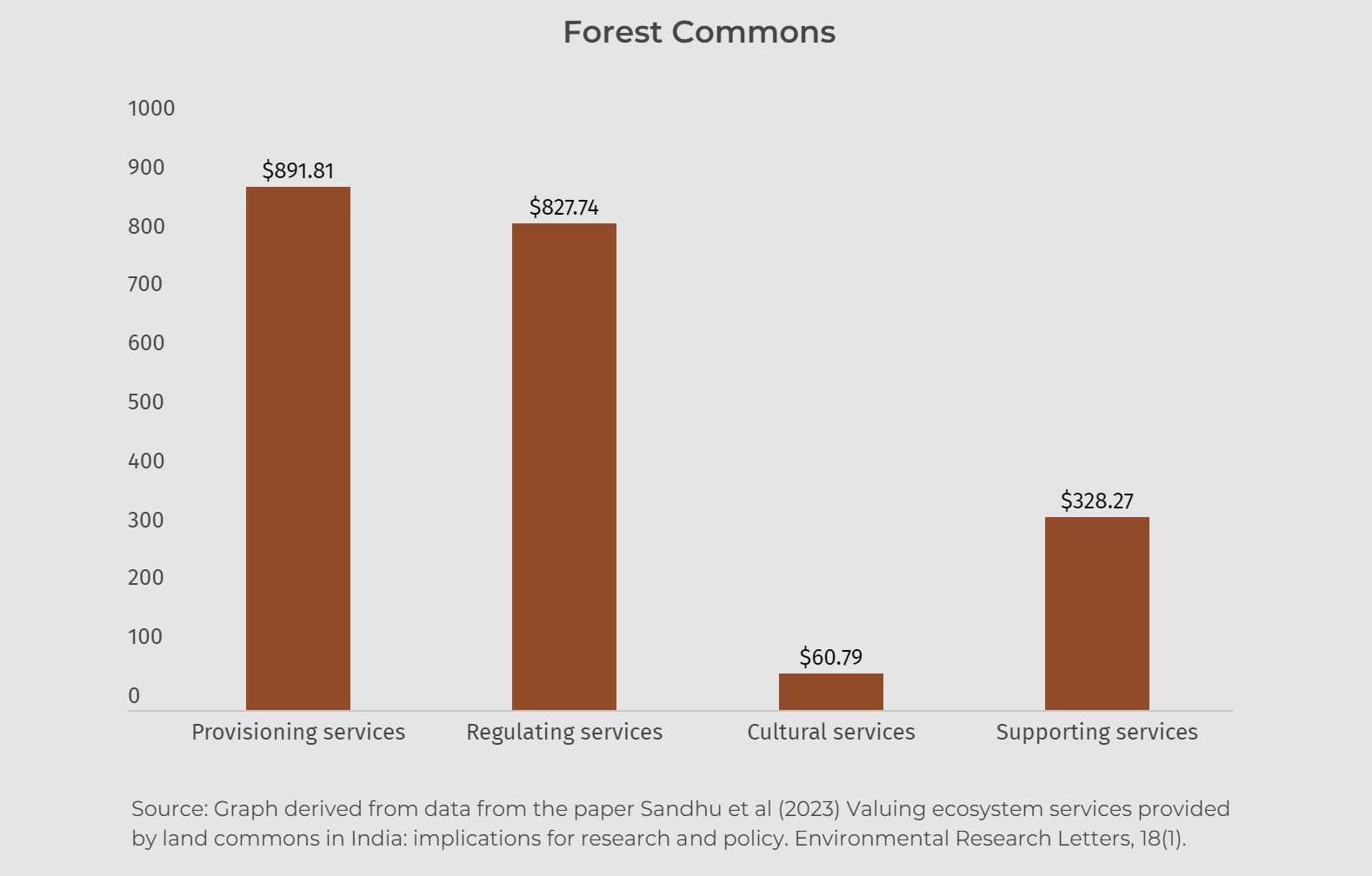
Forest provisioning services (ha−1 yr−1)
Among forest provisioning services, food is the highest contributor followed by livelihoods, biodiesel, water and fuelwood.
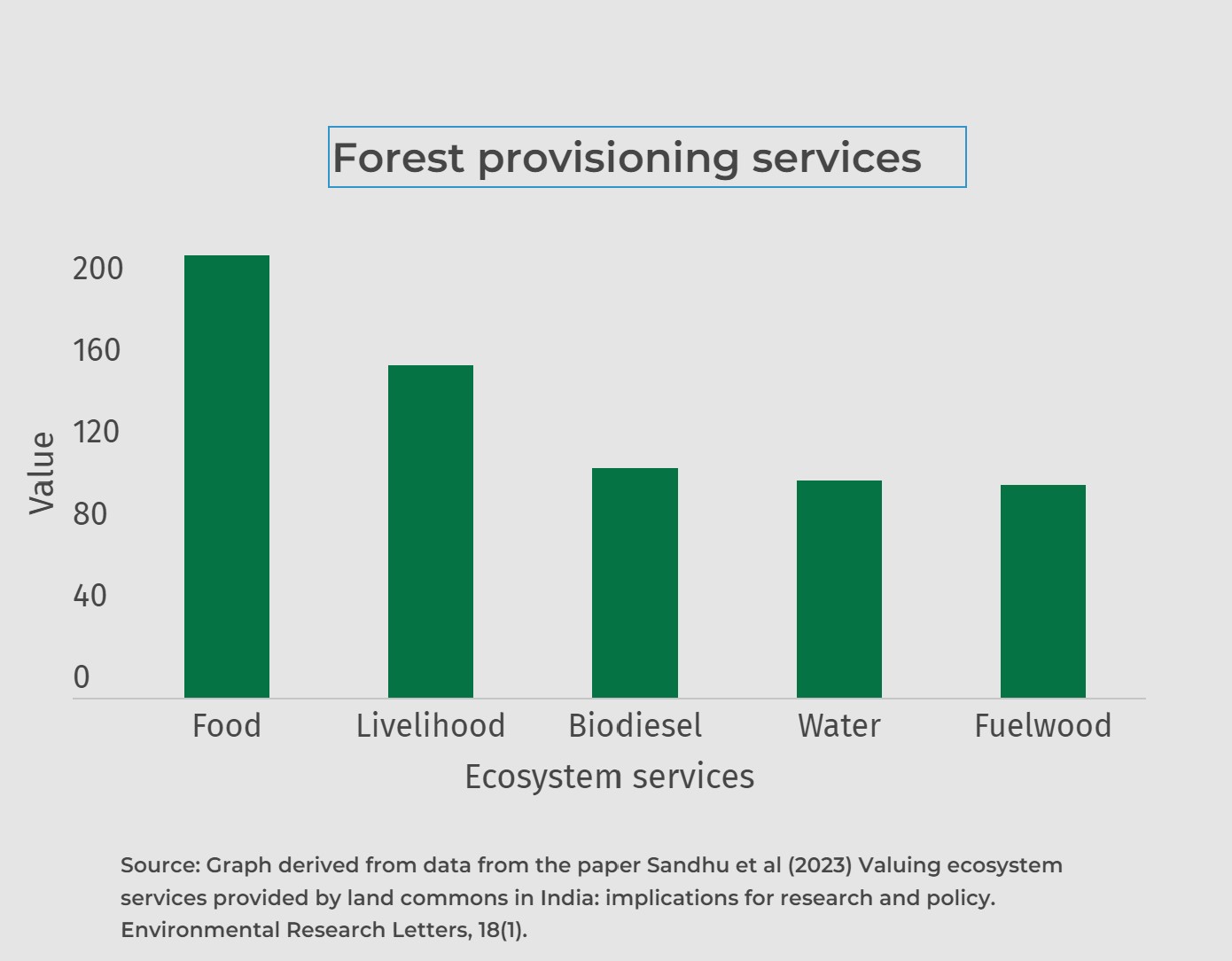
Forest regulating services (ha−1 yr−1)

Among forests’ regulating services, the value of watershed services is the highest followed by carbon sequestration, air purification and pollination ha−1 yr−1. The value of gene pool as a supporting service is around $180.31, while nursery function is around $83.49 ha−1 yr−1. Cultural services, recreation and tourism services from forests are around $56.50 ha−1 yr−1 .
Culturable wastelands, permanent pastures and other grazing lands (ha−1 yr−1)
The average economic value of provisioning ecosystem services is the highest followed by regulating services, supporting services and cultural services.
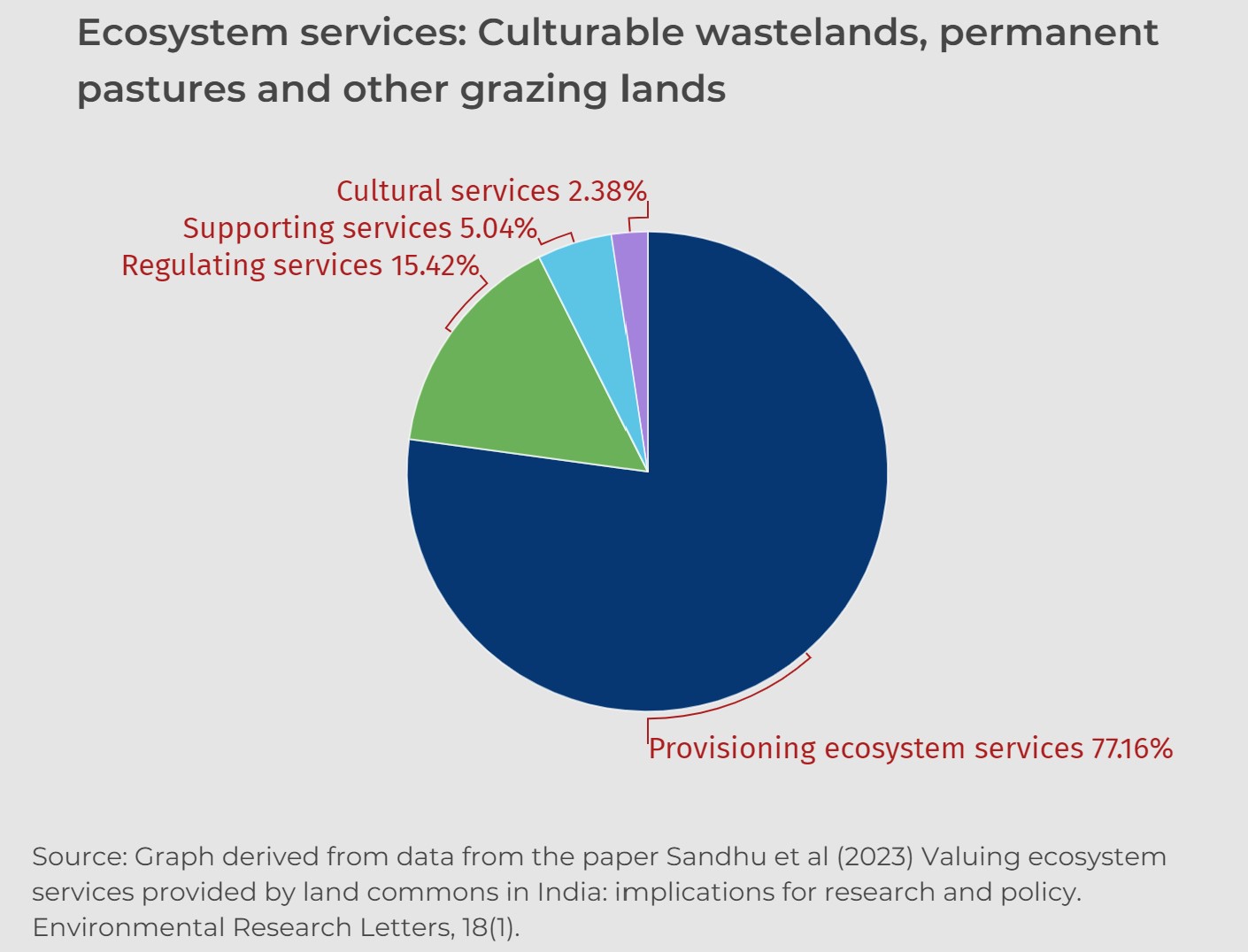
Provisioning services from culturable wasteland, permanent pastures and other grazing lands (ha−1 yr−1)
Among the provisioning services from culturable wasteland, permanent pastures and other grazing lands, the value of food is highest followed by non timber forest produce (NTFPs), fodder, water and fuelwood ha−1 yr−1.
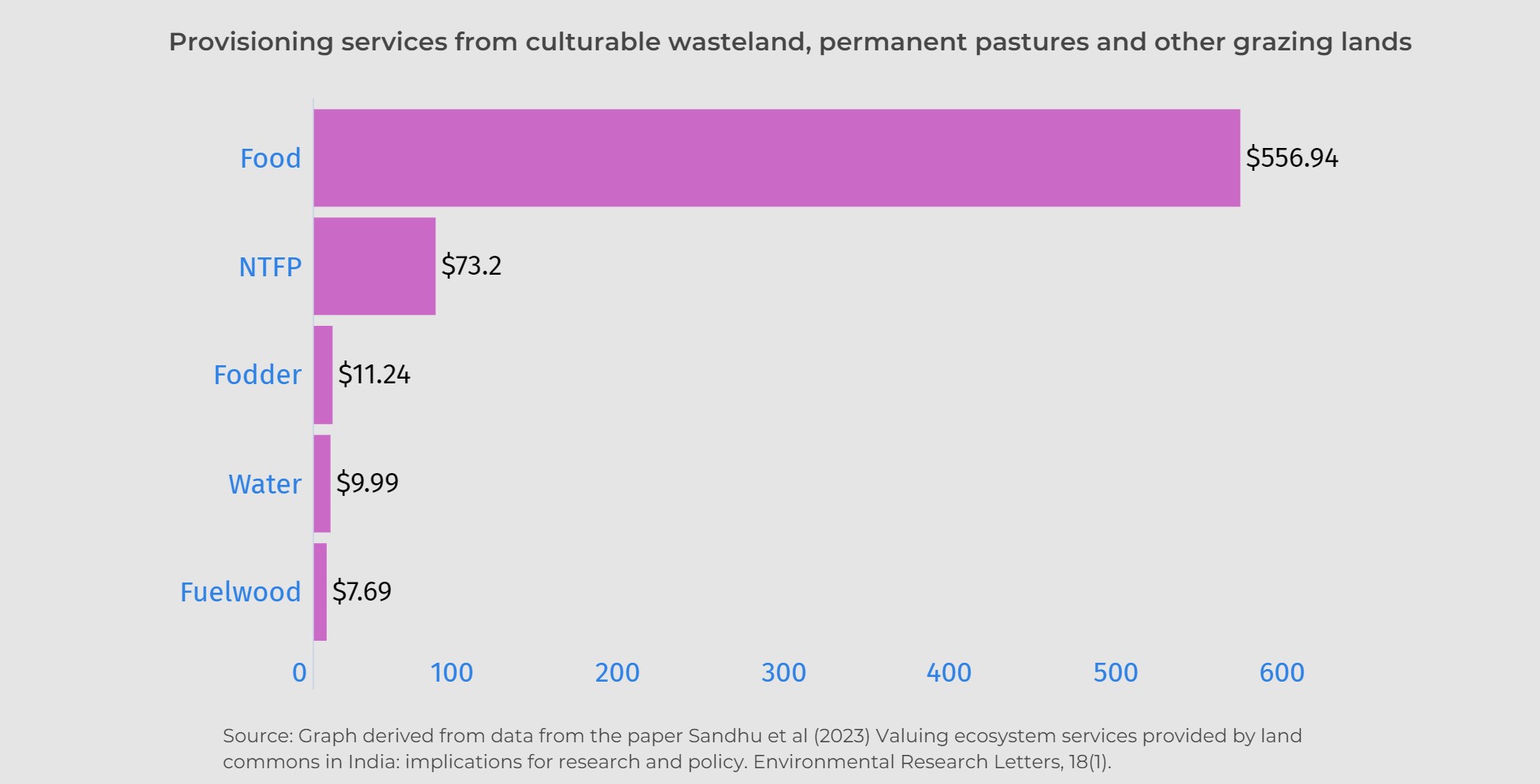
Regulating services from culturable wasteland, permanent pastures and other grazing lands (ha−1 yr−1)
In terms of regulating services, soil fertility contributes the highest followed by climate regulation, watershed services and waste treatment at ha−1 yr−1 . Supporting services include nutrient cycling at $43.46 ha−1 yr−1 and recreation and tourism as cultural services at 20.49 ha−1 yr−1.

Barren and unculturable lands (ha−1 yr−1)
Barren and unculturable lands contribute around $196.79, with a minimum of $52.69 and maximum of $429.82 ha−1 yr−1.
Regulating services: Barren and unculturable lands (ha−1 yr−1)
Among the regulating services, soil fertility has the highest contribution followed by climate regulation, watershed services, waste treatment and biological control ha−1 yr−1.
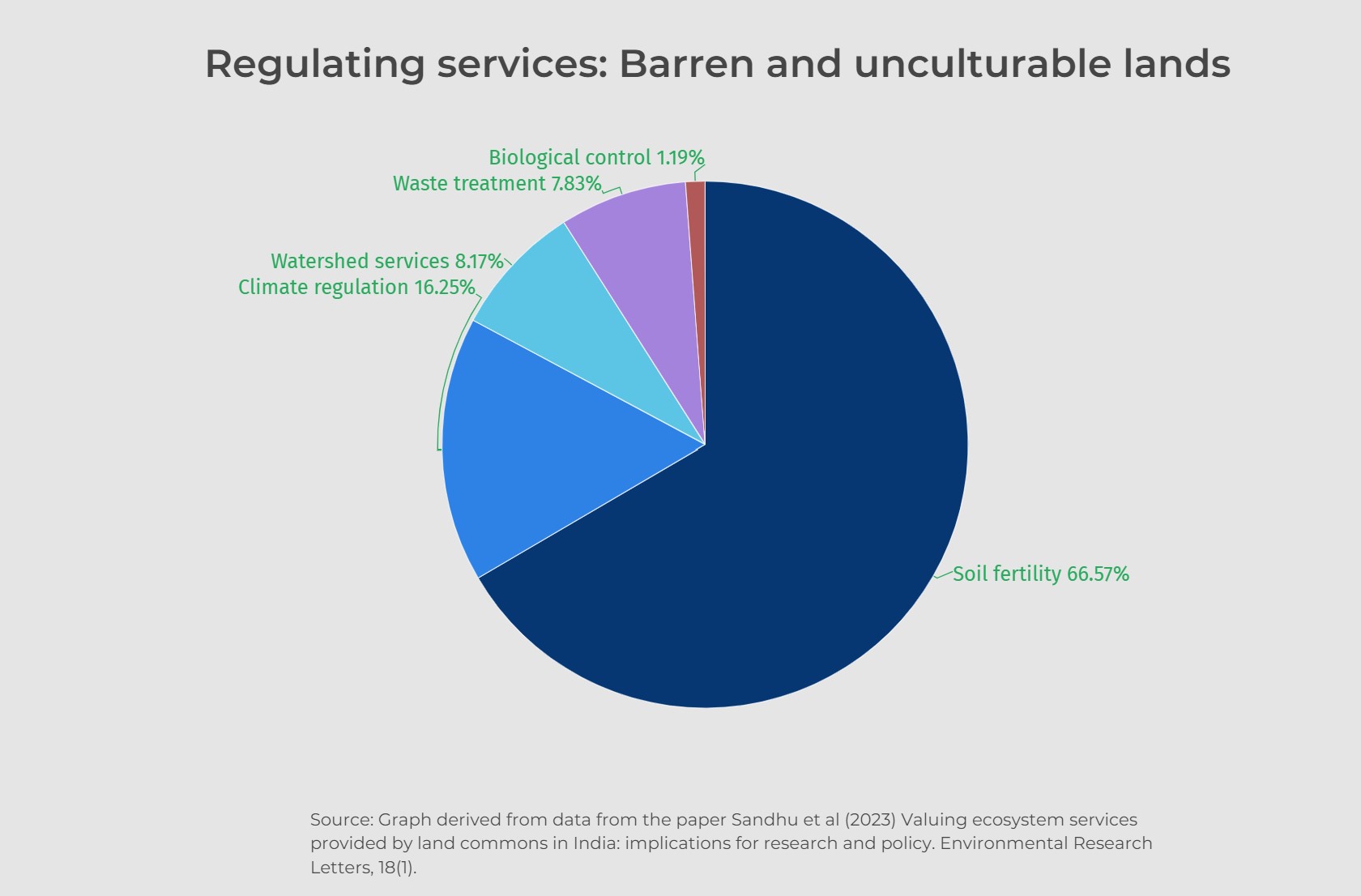
The contribution of land commons is significant and demands attention
Land commons in India provide ecosystem services worth around $90.5 billion yr−1 derived from an area of 66.5 million hectares, out of which forests contribute $69.5 billion yr−1 , culturable wastelands $10.7 billion yr−1 , permanent pastures and other grazing lands around $7.8 billion yr−1 , and barren and unculturable lands $2.3 billion yr−1. Thus, ecosystem services provided by land commons in India are worth $307.9 billion yr−1 globally.
Rajasthan contributes the highest at $10.7 billion yr−1 and has the largest total area under commons (9.8 million hectares) followed by Madhya Pradesh that contributes $10.1 billion yr−1 with an area of 7.4 million hectares followed by Maharashtra which contributes $9.4 billion yr−1 with an area of 6.7 million hectares. However, spatial area does not always correlate with the economic value. For example, Gujarat has more area under commons, but less economic value than Chhattisgarh, Odisha, Jharkhand, and Tamil Nadu, due to large proportion of barren and unculturable lands.
The economic value of ecosystem services is predicted to decline by $80 billion by 2030, $73.8 billion by 2040 and $68 billion by 2050 due to unsustainable management and degradation of commons if better policies are not implemented to protect and enhance commons.
The study argues that:
- There is an urgent need to build policy incentives and develop decision making tools to help manage commons more sustainably.
- More research at the granular level is needed to estimate the economic value of commons in partnership with local communities focusing on the village or district level.
The paper is an open access paper. The infographics used in this article have been constructed by using data from the paper.
/articles/valuing-ecosystem-services-provided-land-commons